Full interview with Cricket Victoria CEO Andrew Ingleton on job cuts
Cricket Victoria’s chief executive says the sport will not fall behind other codes despite sweeping cuts to community programs. He spoke to Leader for the first time and revealed the full extent of the restructure. SEE FULL Q&A
North
Don't miss out on the headlines from North. Followed categories will be added to My News.
Cricket Victoria chief executive Andrew Ingleton says the sport will not fall behind other codes despite sweeping staff cuts to community programs.
Mr Ingleton confirmed about 50 full-time staff – 36 per cent of the workforce – as well as seven or eight casual employees would finish up at the sporting body on Friday after being made redundant.
In his first interview with Leader since we revealed the cuts two weeks ago, Mr Ingleton maintained community cricket hadn’t been singled out but had suffered the most “workforce cost”.
He said other areas of the organisation had also taken a hit, including the consolidation of high performance coaching roles and reduced operating expenditure.
He said the executive management team would take a pay cut but he didn’t intend to share how much.
Mr Ingleton confirmed the new community cricket structure would include four regions across the state with three staff in each, but said their support model for clubs, associations and schools would “certainly change” given the reduction in staff.
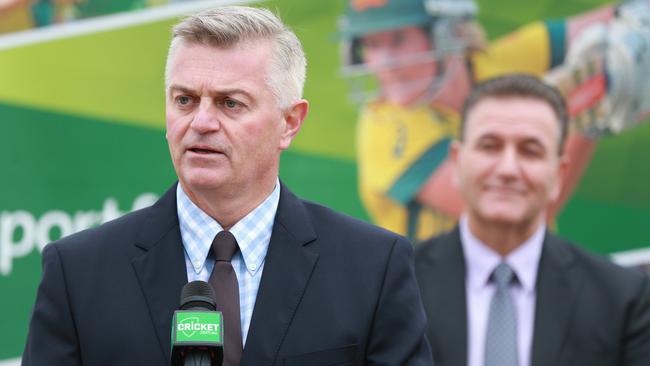
Each of the regions will have an area manager, cricket manager and club officer.
The previous structure had 17 regions with at least three staff in each.
When pressed on why Cricket Victoria hadn’t dipped into its cash reserves and extensive assets portfolio – valued at more than $25 million last June – to try to ride out the financial crisis, Mr Ingleton said the board had been very careful to protect the balance sheet to ensure the state’s cricket community was in a strong position to rebound from the crisis.
“This is not a decision that we take lightly and recognises the contribution of the individuals that have left has been significant over a long period of time,” he said.
“Clearly our support model will certainly change given the reduction in roles and the experiences and capability of the people that have left.”
Mr Ingleton said Cricket Victoria would retain a statewide junior pathway program but it would be revamped to “better leverage existing representative competitions and Premier Cricket”.
“We will definitely retain a statewide pathway system so that it helps identify and develop talented cricketers in Victoria no matter where you live,” he said.
When asked if he thought the extensive cuts would put cricket at a disadvantage over other sports such as AFL and soccer, he said all sports were responding to the same challenges during the crisis and he didn’t think cricket would suffer any more than others.
READ THE FULL INTERVIEW BELOW
Reporter: Talk us through what sort of financial position Cricket Victoria was in and what led to the restructure?
Andrew Ingleton: What’s led to the restructure, and I guess the development of a plan to ensure that we’re well positioned to survive this crisis and to be able to support the Victorian cricket community in the future, is a combination of the economic uncertainty; that has led to Cricket Australia recognising the need to request a funding cut from the states, and the risks to revenue we generate ourselves; through sponsorship of our BBL clubs, revenue we generate at the CitiPower centre via indoor centre bookings and events and uncertainty around other revenue generated via the BBL (memberships and ticketing).
Has this been coming for some time or is it purely on the back of the coronavirus and what impact that has and the future impact of it?
As I explained I think the drivers of the need for this change is a combination of those factors that I just outlined.
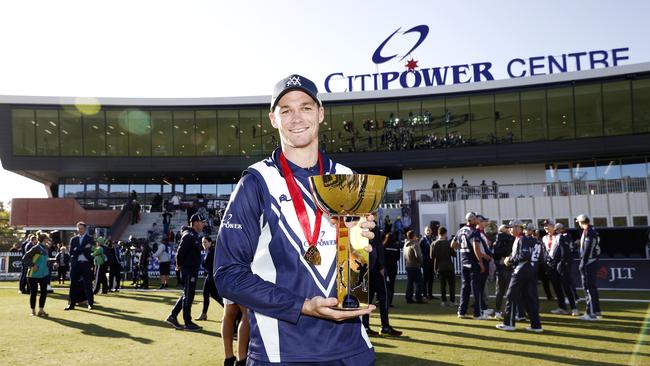
Given Cricket Victoria’s cash reserves and extensive assets portfolio are as you say for Victorian cricket, why didn’t you dip into them given the area of community cricket has suffered the most as it would seem in this restructure?
The board has been very careful to try to protect our balance sheet and preserve cash and ensure those reserves are retained for the Victorian cricket community, and are retained so that we are in a strong position to rebound from this crisis. We’ve got those reserves there to support clubs and associations as we emerge from this crisis, and also to underpin the financial viability of the organisation moving forward. We’re also cognisant there are greater risks out there, it’s still unknown as to whether the BBL will be played in front of crowds or the Indian series goes ahead, so there are further risks to revenue and funding that exists.
How many positions have been lost and what percentage of the workforce is that?
Around 36 per cent of the roles in our organisation have been made redundant, that includes some vacancies we were carrying. Overall we’ve reduced our permanent roles by around 50 and some casual and seasonal staff roles by seven or eight.
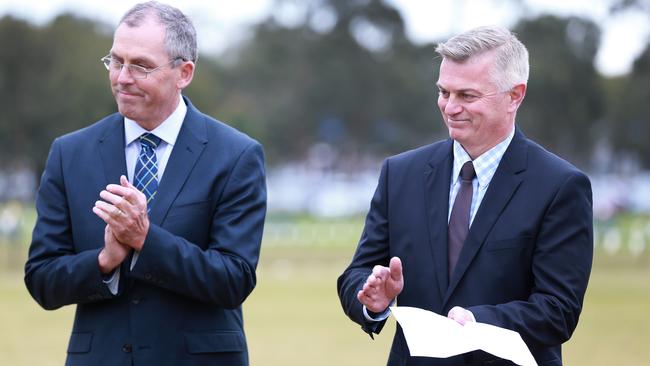
Are you in a position yet to explain what the community cricket structure will look like going forward?
We’re basically preserving an area structure. We want to ensure the cricket regions and the area structure that has been established and underpins the way we look to work with clubs, associations, volunteers and schools across the state remains in place. We’re preserving an area structure that will support the state in an organised way, clearly with a much reduced capacity. We are retaining four areas, three personnel in each area from that field force perspective, and then we’re supporting this area structure with some functional specialists in head office, specialists in terms of facilities and infrastructure, government relations, schools specialist, diversity specialists, competition management and club development specialist. So essentially some functional expertise to help us connect with clubs, associations and schools within the areas and support the field force.
Clearly our support model will certainly change given the reduction in roles and the experiences and capability of the people that have left. I want to make sure you’re left in no doubt that this is not a decision we take lightly and recognise the contribution of the individuals that have left has been significant over a long period of time. Following those job losses our support model will certainly change and we’re going to have to think differently about how we can service the volunteers, associations and affiliates across the Victorian state and whether we do that through better use of technology, enhanced call centre capability. However, we look to innovate and change how we support this army of volunteers we know we need to consult, we need to get feedback and work together. I’ve been really buoyed and pleased with the support we’ve received from key affiliates and individuals that want to be a part of the solution.
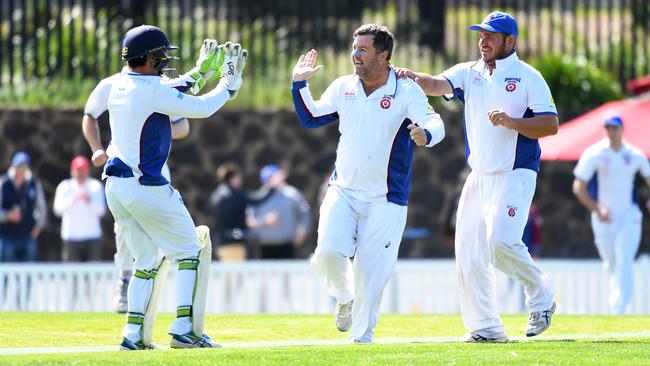
Will there be a period after the restructure has been completed where you’ll go out to those stakeholders and affiliates and consult with them and get their feedback on how under the new model you can best make that work and service their needs going forward?
Absolutely. We’ve started that consultation process already with the affiliate bodies, whether that be the VMCU (Victorian Metropolitan Cricket Union), VCCL (Victorian Country Cricket League), we basically have been communicating and participating in meetings using all the different technology that’s available today, but hopefully we’ll be able to visit and meet face-to-face with our key volunteers and with the relationships we have and really sit down and work together and work out how to galvanise the wonderful army of volunteers to help us continue to grow cricket in Victoria.
With those four regions, will they have a mix of both country and metro associations and clubs and if so, is there a plan to address the different needs because obviously the needs of country cricketers getting exposure or developing participation might be a bit different to those in the metro areas?
Definitely. We basically have retained a mix of individuals who have experience in metro and regional areas with some country based staff and some metro based staff. So we’ve retained a mix, we understand the different needs of communities across the state, we certainly understand and absolutely are determined to ensure that no matter where you live you have the opportunity to enjoy our game. If you are talented and want to pursue cricket as a career then you have that opportunity, and we’re very determined to ensure nobody is disadvantaged through this change.
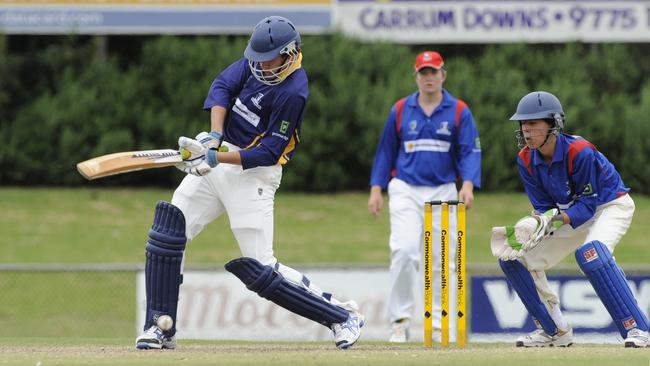
I understand the executive management team is also taking a pay cut. Do you have a figure on what that is?
I don’t intend to share that but that’s part of our overall plan. We’re not just restructuring the organisation, we will be implementing some adjustments to executive salaries, there’s also a plan to understand how effective individuals can be in the current environment and I think there will be some reduced hours and reduced remuneration as part of the mix which I’ve shared with the organisation already.
We are also taking out some significant operating expenditure so the changes we’ve made have been extensive across the whole organisation. While in community cricket the impacts have been primarily community cricket’s workforce cost and individuals. In Big Bash it was more focused on a reduction in operational expenditure, extending our service model and seasonal workforce cost reduction, whereas in high performance we’ve identified savings through consolidation of coaches roles and a reduction in operational costs associated with the national competition we compete in. There’s some significant operational expense savings as part of the overall response to this challenge.
There’s been a lot of respected people who have done a lot of good work for cricket across Victoria who have lost their jobs. Is there a sense the morale and culture within the organisation might be low at the moment and what would be the plan going forward to help get everyone up and going for the next season when it comes around after coronavirus?
There’s no doubt this has not been an easy decision and is a difficult time for the organisation with many good people losing their roles. I want to make the point this is a restructure of the organisation and in no way reflects on any individuals whose roles have been made redundant. We want to recognise and celebrate the achievements of the individuals that have left and we recognise we’re not able to do that as effectively as we’d like through a zoom meeting and ultimately I hope we have the opportunity to farewell everybody face-to-face in an appropriate way.
Certainly it’s been a tough couple of weeks in the organisation, it’s a big change but this is a proud organisation that will work together with the volunteers and the clubs, associations and schools that help deliver cricket in this state, help us be a very strong state in terms of participation and a very strong state in terms of performance on field and that’s ultimately our objective. We will be focused on continuing to grow the game, keep growing our fan base and make sure we’ve got the best high performance system in Australia and produce players for higher honours.
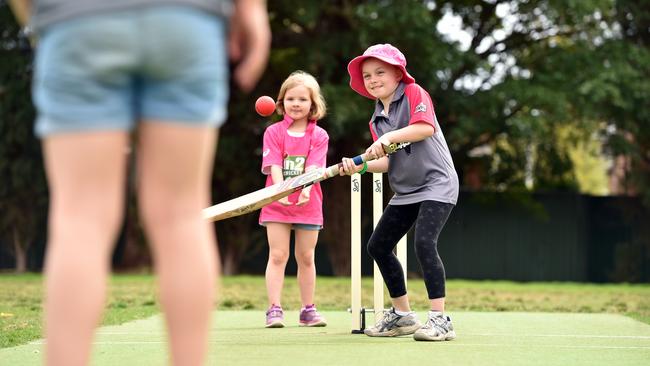
Given Cricket Victoria’s priorities under the previous model are growing participation, fans and high performance, how do you aim to continue to do that or will there be a refocus given the fewer resources and people at the organisation?
I’m excited about the fundamentals of Victoria from a cricket participation perspective. If you stand back and look at Victoria we’ve been growing strongly through immigration, we’ve seen strong immigration from cultures that are very familiar with cricket and there’s no doubt we’re starting to see growth in terms of southeast Asian participation in the Victorian cricket community and that will continue. I think we’ll see an underlying support for growth due to population growth. We’ve had wonderful support from the State Government in terms of the development of facilities and infrastructure, both to support the fantastic growth of girls’ cricket and women’s cricket, but also to make sure that we’ve got facilities and infrastructure to meet the growing demand.
Those programs continue, we’ve retained the capability to work with local governments, work with clubs and associations to ensure they can access those funds and make sure their facilities provide a welcoming and inclusive environment for everybody. On top of that great State Government support, Victorians are mad about sport. I’m hoping people burst from their houses and pick up a cricket bat and ball and really embrace the opportunity to get out there and play in the sunshine and have fun with their mates.
I think the fundamentals of Victoria and our attitude to sport are really positive for Victorian cricket and other sports so I’m really encouraged by that. In terms of how we support the growth of participation, how we support the clubs, associations and schools that ultimately deliver the cricket playing opportunities it’s going to have to be different because unfortunately we’ve had to make these changes and so we’re going to have to change the way we support that whole clubs and association infrastructure. But we will support the volunteers and I have no doubt they will rise to the challenge and work with Cricket Victoria to make sure kids in their community can enjoy the game just as they always have.
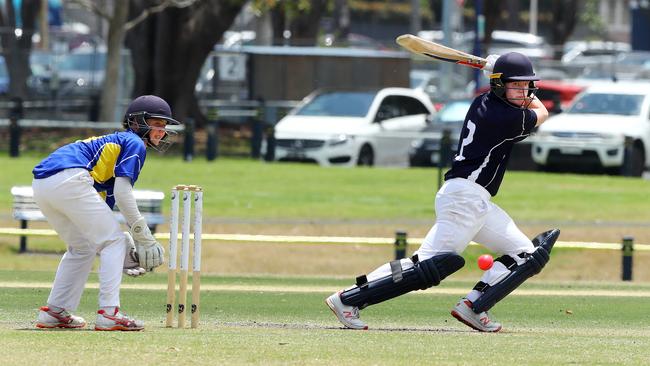
You mentioned other sports. Do you fear that cricket will be at a disadvantage with AFL and soccer and others going forward?
No I don’t, it’s quite clear AFL and soccer have had to respond to the same challenges, hopefully their seasons can commence as soon as possible and as soon as it’s safe to do so. All sports, society really is having to deal with this unprecedented crisis so I don’t think cricket will be more disadvantaged than any other sport.
What’s the long term plan for junior pathways going forward? I understand they’ll look a bit different this year but is there a plan to reintroduce those pathways we have seen over the last couple of decades in the future?
There’s a lot of speculation about that and I guess what I’d like to say is we’ve been working on a redesign of our underage pathways for some time. We want to deliver a sharper focus on high performance outcomes. We haven’t finalised any revamp at this point in time, there’s a lot of balls in the air in terms of other factors to consider, but I’ve got no doubt that ultimately we will better leverage existing representative competitions and Premier Cricket as part of our talent identification and development system. But we will definitely retain a statewide pathway system so it helps identify and develop talented cricketers in Victoria no matter where you live.
Would that include country teams competing in those representative metropolitan competitions like it was 20 years ago?
No, we’ll retain a statewide pathway system full stop. But we’re looking at opportunities to revamp the system from a range of perspectives. There’s a few balls in the air, we want to consult with our affiliates and discuss with them some of the best outcomes but want to take advantage of and better leverage some of the existing representative cricket and obviously Premier Cricket is a key part of our talent identification and development system as well. Our overall development pathway we want to make sure it’s really well integrated and we want to make sure we have a statewide opportunity for talented cricketers, boys and girls, we don’t want to see anybody disadvantaged in that process. There’s a few things we know we will preserve, there’s a review, there’s going to be a lot of consultation, we recognise the importance of ensuring that country kids have the same opportunity as city kids and that will be one of the features of any development of our youth pathways.
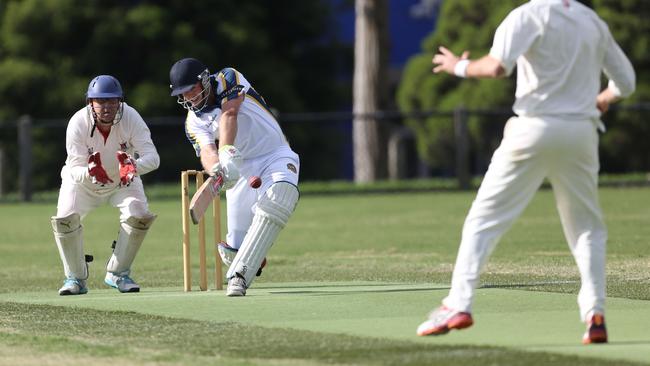
Has it been any impact on the contracted players that Cricket Victoria has with the restructure?
I think there’s ongoing discussions between Cricket Australia and the ACA to ensure the ACA understands the context and CA is seeking support from the players in Australian cricket in terms of responding to this crisis. They’re ongoing those discussions, and in terms of Victorian players, I guess the major impact has been there’s been a delay in the contracting system that would normally be implemented by now but otherwise there’s been no impact at this stage.
With the staff across the regions over the last few years there’s been a lot of funding and work put into developing women’s pathways and women’s cricket, is there a plan going forward to make sure that doesn’t go backwards and as much of an effort is still put into developing and making pathway programs for girls and women visible so it’s an option for them?
Absolutely. The things we’ve done as a sport basically with the objective of inspiring young girls to believe that cricket is a game for them as much as it is for boys will continue. I think you could start at the top with the professionalisation of the women’s game, the establishment of the WBBL and the promotion of the WBBL so young girls could see what they could become and be inspired by our very best female cricketers. At the grassroots level there’s been a determined effort to support clubs and schools to establish girls cricket teams and that will continue. We’ve established girls cricket pathways as well, slightly different age profiles which reflects the national carnival age profiles but ultimately with the same intent.
At a Premier Cricket level we’ve expanded the number of women’s Premier Cricket clubs in the past couple years. There’s a series of initiatives and outcomes that we’ve implemented to help grow the game. The women’s T20 World Cup final at the MCG demonstrated the appeal of the game and the love of women’s cricket and the passion of Victorians for female sport. I feel like we were extraordinarily fortunate to have been able to stage that game and celebrate women’s cricket. It’s very unfortunate one week later we went into lockdown, so hopefully we can revive that energy and passion that was around the women’s game as we emerge from this crisis and into the summer.
Were the Premier Clubs asked to take a cut from their dividend, or has there been any impact on funding that goes to the Premier Clubs out of this?
I’m not going to go into details but there’s been impacts across Victorian cricket including to Premier Cricket. We had a meeting with premier presidents (on Thursday) evening where we will be providing more information but the challenge for us in terms of reducing operating expenditures is significant and everybody is bearing some burden.
What’s your message to local clubs and associations going forward given there’s obviously going to be an impact and perhaps a bit of a lack of trust towards Cricket Victoria out of this?
My message is we absolutely appreciate, recognise and value the contribution that they make to our game. We want to work with clubs, schools and associations to ensure that the game continues to thrive and we will consult and listen and find ways to work together. But ultimately, the respect I have for the volunteers who are the lifeblood of our game is enormous and we will get through this, we’ll get through it together and ultimately cricket will remain a strong and vibrant sport in Victoria.
MORE: WHY JUNIOR PATHWAY PROGRAMS MATTER
CLUB, LEAGUES READY TO KEEP JUNIOR CRICKET STRONG
